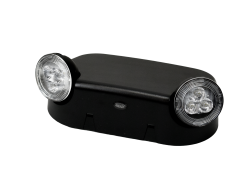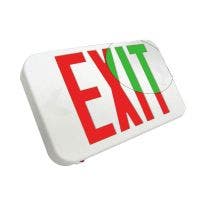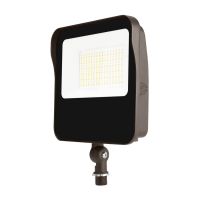LED Emergency Lights
LED emergency lights are essential for commercial locations to meet local and state regulations in the event of a power loss and they help ensure safe paths of egress in an emergency. From OSHA to building fire codes to insurance standards, we offer emergency lighting to meet those requirements and more. Our LED emergency lights with emergency backup power are designed to help light the way to safety, ensuring you have reliable illumination during power outages and emergencies.
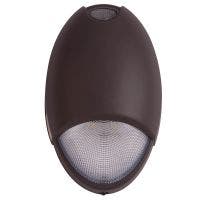 C-Lite LED Wet Listed-Cold Location Emergency Light |C-EE-A-EMG Series | Battery Backup | Dark Bronze or WhiteOOS$194.99
C-Lite LED Wet Listed-Cold Location Emergency Light |C-EE-A-EMG Series | Battery Backup | Dark Bronze or WhiteOOS$194.99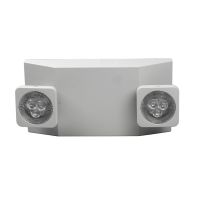 C-Lite Low Profile LED Emergency Light | Battery Backup | Remote Capability Option | Self Test Option | Black or White$26.99 - $41.99Pricedrop
C-Lite Low Profile LED Emergency Light | Battery Backup | Remote Capability Option | Self Test Option | Black or White$26.99 - $41.99Pricedrop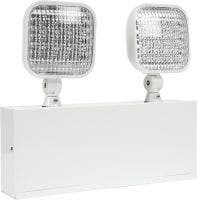 C-Lite LED 27W Emergency Lighting | C-EE-A-EMG Series | 6V Remote Capable | Battery Backup | WhiteYour Price $101.99 $103.99
C-Lite LED 27W Emergency Lighting | C-EE-A-EMG Series | 6V Remote Capable | Battery Backup | WhiteYour Price $101.99 $103.99 C-Lite LED 1W Single Remote Head | C-EE-A-EMG Series | Multi-Volt | Outdoor | Gray$33.99
C-Lite LED 1W Single Remote Head | C-EE-A-EMG Series | Multi-Volt | Outdoor | Gray$33.99 C-Lite LED 2W Double Remote Head | Multi-Volt | Indoor or Outdoor | With or Without Self-Test$48.99
C-Lite LED 2W Double Remote Head | Multi-Volt | Indoor or Outdoor | With or Without Self-Test$48.99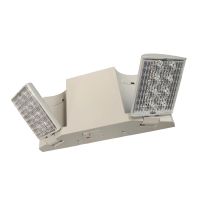 C-Lite LED 2.1W Low-Profile Emergency Light | C-EE-A-EMG Series | Battery Backup | Black or WhiteOOS$29.99
C-Lite LED 2.1W Low-Profile Emergency Light | C-EE-A-EMG Series | Battery Backup | Black or WhiteOOS$29.99 C-Lite LED 2.1W Low-Profile Emergency Light | C-EE-A-EMG Series | Battery Backup | White$29.99
C-Lite LED 2.1W Low-Profile Emergency Light | C-EE-A-EMG Series | Battery Backup | White$29.99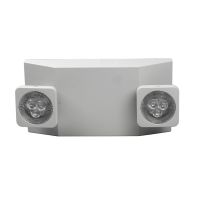 C-Lite Low Profile LED Emergency Light | Battery Backup | Self-Test | White$41.99
C-Lite Low Profile LED Emergency Light | Battery Backup | Self-Test | White$41.99 C-Lite LED 2W Double Remote Head | C-EE-A-EMG Series | Multi-Volt | Outdoor | Gray$48.99
C-Lite LED 2W Double Remote Head | C-EE-A-EMG Series | Multi-Volt | Outdoor | Gray$48.99LED Emergency Lights For Any Emergency Situation
Looking to buy reliable LED emergency lights? You’re in the right place! e-conolight offers a wide range of high-quality LED emergency lights suitable for commercial, retail, and industrial applications. Our emergency lighting solutions ensure safety & security by providing reliable illumination during a power outage or emergency.
With advanced LED technology, our emergency lighting offers bright, long-lasting illumination that consumes less energy than traditional lighting sources. e-conolight's emergency lights also come in various types and styles and meet the latest safety standards and regulations.
What Are LED Emergency Lights?
LED emergency lights are fixtures that provide illumination during a power outage or other emergencies. Emergency lighting uses light-emitting diodes (LEDs) as their light source, which are highly efficient and consume less energy than traditional incandescent or fluorescent bulbs.
LED emergency lights come in many types—such as wall-mounted, ceiling-mounted, recessed, remote head, and wet/cold-location models—and are typically powered by a battery backup system (NiCad, NiMH, or Lithium-ion) to ensure they operate during power outages.
The Different Types of Emergency Lights
There are many different types of LED emergency lights, including:
- Exit Signs: Often used during emergencies, designed to clearly indicate exit routes in buildings.
- Recessed Emergency Lights: Installed into ceilings or walls for a streamlined look, these emergency lights activate automatically when the main power supply is interrupted.
- Surface-Mounted Emergency Lights: Attached to walls or ceilings, these emergency lights are easy to install and provide broad, reliable illumination in hallways and open spaces.
- Combo Emergency Lights: These emergency units combine exit signs with emergency lighting, offering a dual-function solution for building safety.
Code Requirements for Emergency Lights
Adhering emergency lights to local, state, and federal code requirements in commercial buildings is critical for ensuring the safety of occupants during power outages or emergency situations. Failing to comply with these emergency light regulations can lead to severe consequences, including legal penalties and increased liability in the event of an incident.
Key standards influencing the design and placement of emergency lights include:
- OSHA (Occupational Safety and Health Administration) mandates that employers provide safe evacuation routes with adequate emergency lights.
- NFPA's Life Safety Code (National Fire Protection Association 101) details specific requirements for the visibility and performance of emergency lights in various building types.
Together, these standards ensure that commercial spaces are equipped with well-placed, functional emergency lighting that meets strict safety criteria, protecting both employees and visitors.
Are Wall-Mounted Emergency Lights Required by Law?
Wall-mounted emergency lights are required in many commercial and industrial buildings to meet safety standards set by organizations like NFPA, ICC, and OSHA. These regulations stipulate that emergency lighting must be installed in all means of egress and provide illumination for at least 90 minutes during a power failure. It's important to have your emergency lights inspected and tested regularly by a qualified professional to ensure compliance with these requirements.
FAQs about Emergency Lights
How long do LED emergency lights last?
The lifespan of LED emergency lighting depends on a variety of factors, such as the quality of the emergency lights and the frequency of use. On average, LED emergency lights can last between 50,000 and 100,000 hours, which is much longer than the lifespan of traditional emergency lighting.
Are wall-mounted LED emergency lights easy to install?
Our wall-mounted LED emergency lights are easy to install, especially for a qualified electrician. We provide clear step-by-step instructions and LED units are typically compact and light, making them easy to handle.
How can you test emergency lights?
The best way to test LED emergency lighting is to follow the manufacturer's instructions, which usually involve pressing a test button or disconnecting the power source
How often should I test emergency lighting?
Most codes recommend a monthly 30-second functional test by pressing the test button, and an annual full 90-minute discharge test. Always follow the manufacturer's specific instructions and local code requirements for comprehensive testing protocols.
How long does an emergency light stay on for?
LED emergency lights are typically required by code (such as NFPA 101) to provide illumination for a minimum of 90 minutes during a power failure. This duration is crucial to allow sufficient time for occupants to safely evacuate a building. The actual runtime can vary based on the specific model, battery quality, and age, but all compliant emergency lights are designed to meet or exceed this 90-minute standard.
How many lumens do I need for LED emergency lights?
LED emergency lights typically require at least 50 lumens to provide sufficient illumination during an emergency, but the exact lumen requirement may vary depending on the specific application and local code standards.
What are the different types of LED emergency lights?
The main types of LED emergency lights include maintained, non-maintained, and switchable options. Maintained emergency lights stay on at all times, while non-maintained emergency lights only activate when the main power fails. Switchable emergency lights offer the flexibility of being used in both modes.



